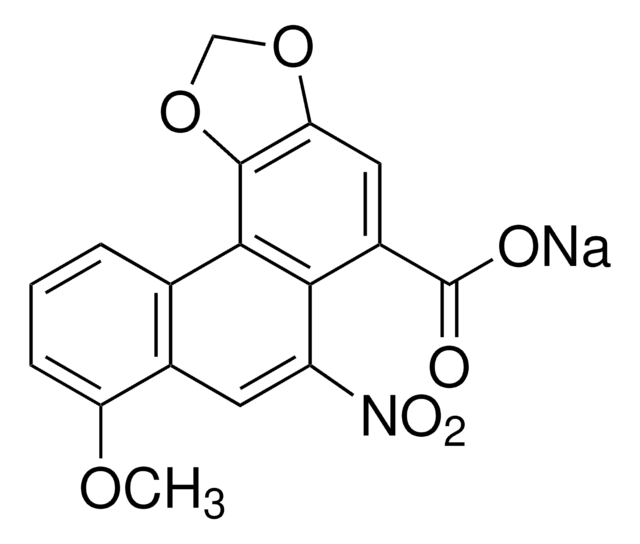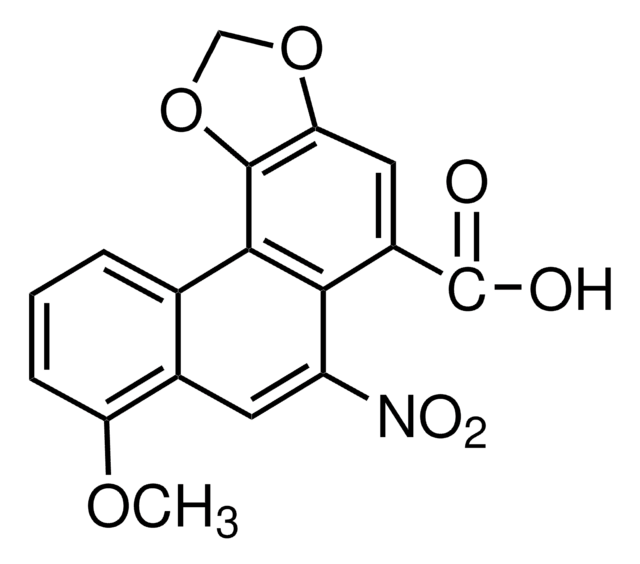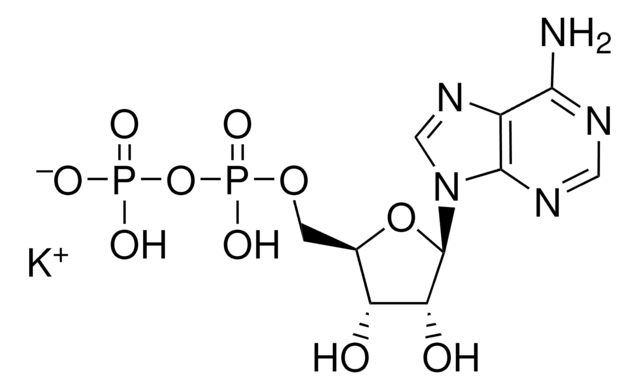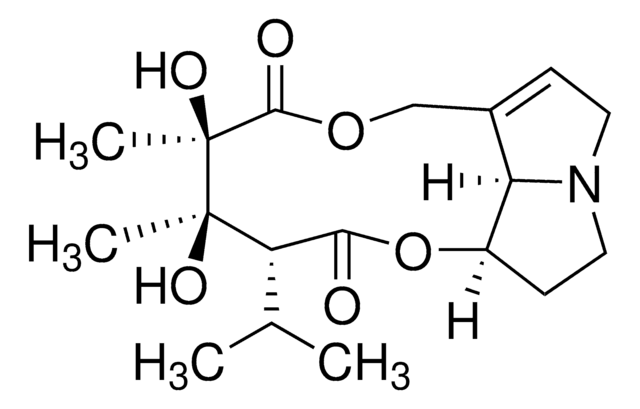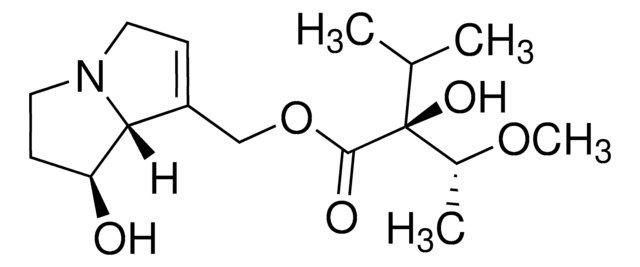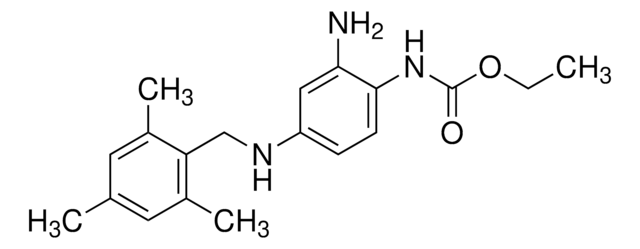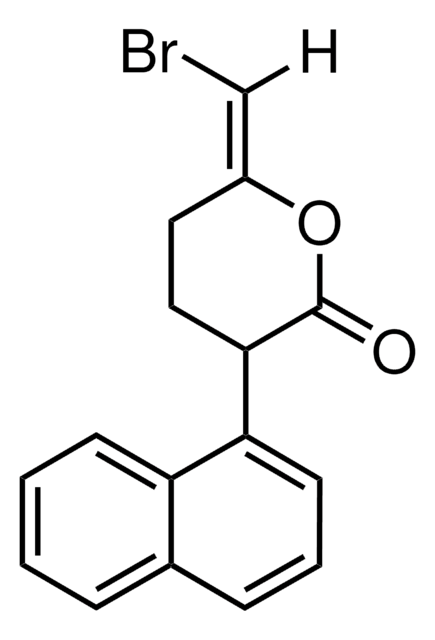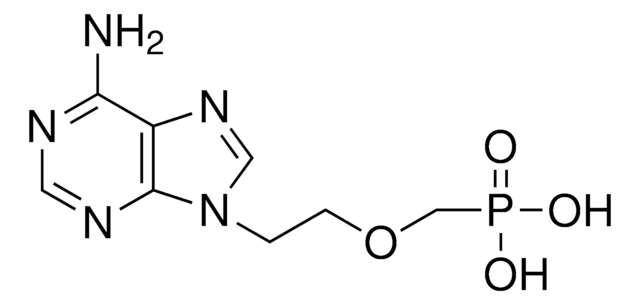Wichtige Dokumente
A5512
Aristolochiasäure I
≥90% (HPLC), powder, phospholipase A₂ inhibitor
Synonym(e):
TR 1736
About This Item
Empfohlene Produkte
product name
Aristolochiasäure I, powder
Assay
≥90% (HPLC)
Form
powder
Farbe
yellow
mp (Schmelzpunkt)
269-270 °C
Löslichkeit
DMSO: soluble
ethanol: soluble
Lagertemp.
2-8°C
SMILES String
COc1cccc2c1cc([N+]([O-])=O)c3c(cc4OCOc4c23)C(O)=O
InChI
1S/C17H11NO7/c1-23-12-4-2-3-8-9(12)5-11(18(21)22)14-10(17(19)20)6-13-16(15(8)14)25-7-24-13/h2-6H,7H2,1H3,(H,19,20)
InChIKey
BBFQZRXNYIEMAW-UHFFFAOYSA-N
Suchen Sie nach ähnlichen Produkten? Aufrufen Leitfaden zum Produktvergleich
Allgemeine Beschreibung
Anwendung
- as a standard for the analysis of Aristolochia sprucei crude extract by high-performance liquid chromatography
- to study its effects on histone deacetylase 3 (HDAC3) aberration and renal fibrosis
- to induce acute aristolochic acid nephropathy and to study its impact on miRNA and mRNA expression in mice
Biochem./physiol. Wirkung
Signalwort
Danger
H-Sätze
Gefahreneinstufungen
Acute Tox. 3 Oral - Carc. 1A - Muta. 1B
Lagerklassenschlüssel
6.1C - Combustible acute toxic Cat.3 / toxic compounds or compounds which causing chronic effects
WGK
WGK 3
Flammpunkt (°F)
Not applicable
Flammpunkt (°C)
Not applicable
Persönliche Schutzausrüstung
Eyeshields, Faceshields, Gloves, type P2 (EN 143) respirator cartridges
Analysenzertifikate (COA)
Suchen Sie nach Analysenzertifikate (COA), indem Sie die Lot-/Chargennummer des Produkts eingeben. Lot- und Chargennummern sind auf dem Produktetikett hinter den Wörtern ‘Lot’ oder ‘Batch’ (Lot oder Charge) zu finden.
Besitzen Sie dieses Produkt bereits?
In der Dokumentenbibliothek finden Sie die Dokumentation zu den Produkten, die Sie kürzlich erworben haben.
Kunden haben sich ebenfalls angesehen
Artikel
Carcinogenesis and Epigenetics
Unser Team von Wissenschaftlern verfügt über Erfahrung in allen Forschungsbereichen einschließlich Life Science, Materialwissenschaften, chemischer Synthese, Chromatographie, Analytik und vielen mehr..
Setzen Sie sich mit dem technischen Dienst in Verbindung.